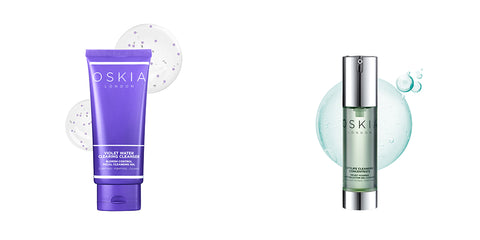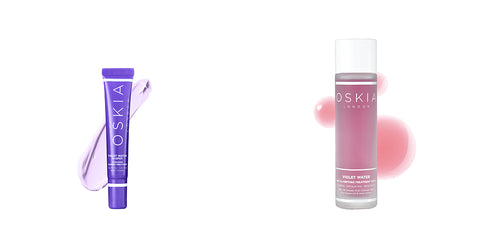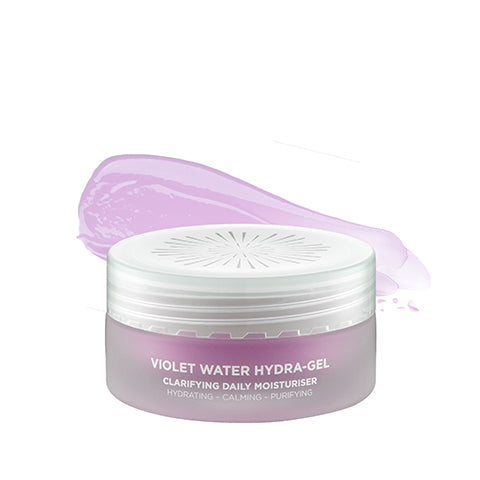Spots, blemishes, acne—whatever you call them, these pesky little skin imperfections can be a source of frustration for many people. Whether you're a teenager experiencing the onslaught of puberty or an adult still battling breakouts, understanding why spots occur in the first place can help demystify this common skincare concern.
1. The Role of Sebaceous Glands: Spots often originate from the sebaceous glands, which are tiny glands in the skin that produce an oily substance called sebum. Sebum plays a crucial role in keeping the skin hydrated and protected. However, when the sebaceous glands produce too much sebum, it can mix with dead skin cells and clog pores, leading to the formation of spot
2. Hormonal Influence: Hormonal fluctuations play a significant role in the development of spots. During puberty, an increase in androgen hormones stimulates the sebaceous glands to produce more sebum, which can result in acne breakouts. Similarly, hormonal changes during menstruation, pregnancy, or menopause can also trigger flare-ups in some individuals.
3. Bacterial Overgrowth: Another contributing factor to spot formation is the presence of bacteria, particularly Cutibacterium acnes (C. acne). This bacterium thrives in the oily environment created by excess sebum and can proliferate within clogged pores, leading to inflammation and the formation of pimples.
4. Genetics: Genetics also play a role in determining an individual's susceptibility to spots. If your parents struggled with acne, there's a higher likelihood that you may experience it too. Genetic factors can influence sebum production, pore size, and how your skin responds to hormonal changes, all of which contribute to the development of spots
5. Lifestyle Factors: Certain lifestyle factors can exacerbate spot formation. These include:
- Diet: High glycaemic index foods and dairy products have been linked to an increased risk of acne in some studies.
- Stress: Chronic stress can trigger hormonal changes that may worsen acne.
- Skincare and cosmetics: Using comedogenic or pore-clogging skincare products can contribute to pore blockage and spot formation.
- Environmental factors: Exposure to pollutants and certain chemicals can irritate the skin and contribute to acne development.
Treatment and Prevention
Cleansing: Regularly washing the face with a gentle cleanser can help remove excess oil, dirt, and dead skin cells, reducing the risk of pore blockage. Try our Violet Water Clearing Cleanser for blemish control or our refreshing Citylife Cleansing Concentrate for anti-pollution protection.
Topical treatments: Over-the-counter and prescription topical treatments containing ingredients like Benzoyl Peroxide, Salicylic Acid, or Retinoids can help unclog pores and reduce inflammation. Discover our Violet Water D-Spot, a topical treatment that helps to clear and calm individual blemishes. Use it in conjunction with our Violet Water Treatment Tonic, a purifying exfoliating treatment tonic containing 31 actives to support, clear and brighten congested skin.
Moisturisation: Use a lightweight, non-comedogenic moisturizer to keep your skin hydrated without clogging pores. Moisturizing is essential even if you have oily skin. Use our Violet Water Hydra-Gel, a lightweight, water-based & oil-free clarifying daily moisturiser.
Lifestyle modifications: Maintaining a healthy diet, managing stress, and avoiding pore-clogging skincare products can all help prevent spots.
The Top Concerns Associated with Oily Skin

Oily, blemish-prone skin can present a myriad of challenges, from excess sebum production to stubborn blemishes and post-inflammatory hyperpigmentation. Understanding and addressing these six key concerns—microbiome balance, excess sebum production, blemishes, inflammation, scarring, and hyperpigmentation—is essential for effective skincare management and achieving a clearer, healthier complexion.
Microbiome Balance: The skin microbiome, comprised of trillions of microorganisms, plays a crucial role in maintaining skin health. In oily, blemish-prone skin, disruptions to the microbiome balance can occur due to factors like harsh skincare products, antibiotics, or hormonal fluctuations. Restoring and maintaining a healthy microbiome through probiotic skincare products and gentle cleansing can help support the skin's natural defense mechanisms.
Excess Sebum Production: Excessive sebum production is a hallmark of oily, blemish-prone skin. Sebum, while essential for skin hydration, can become problematic when overproduced, leading to clogged pores and acne breakouts.
Blemishes: Blemishes, including blackheads, whiteheads, and inflammatory acne lesions, are common concerns for individuals with oily, blemish-prone skin. Proper cleansing, exfoliation, and targeted treatments can help unclog pores, reduce bacterial overgrowth, and promote clearer skin.
Inflammation: Inflammation is a key driver of acne and can exacerbate other skin concerns such as redness and irritation. Calming inflamed skin requires a gentle skincare routine that soothes irritation and reduces redness.
Scarring: Untreated or improperly managed blemishes can leave behind scars, including atrophic (indented) scars or hyperpigmented marks. Preventing scarring involves treating blemishes promptly to reduce inflammation and minimize tissue damage. Additionally, incorporating ingredients like vitamin C, niacinamide, and peptides can help improve skin texture and promote collagen production, aiding in scar repair over time.
Hyperpigmentation: Post-inflammatory hyperpigmentation (PIH) is a common concern for individuals with blemish-prone skin, particularly those with darker skin tones. Addressing hyperpigmentation requires a multifaceted approach, including sun protection to prevent further darkening of pigmented areas, exfoliation to promote cell turnover and fade pigmentation, and the use of brightening agents such as hydroquinone, kojic acid, or alpha arbutin to lighten existing discoloration.
Our Violet Water range was developed to address those 6 key concerns to deliver healthy and beautiful skin. Inspired by the violet-coloured, sulphur-rich, healing waters of Ancient Sicily, the range comprises of 4 products: Violet Water Clearing Cleanser, Violet Water Treatment Tonic, Violet Water Hydra-Gel and Violet Water D-Spot. With acne-fighting ingredients such as Salicylic Acid, Colloidal Silver, Niacinamide, MSM, Gotu Kola, Prebiotics and MSM.







